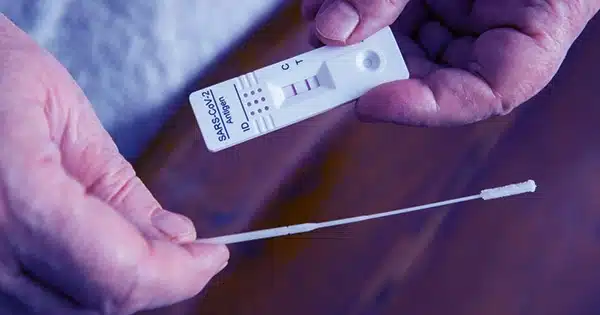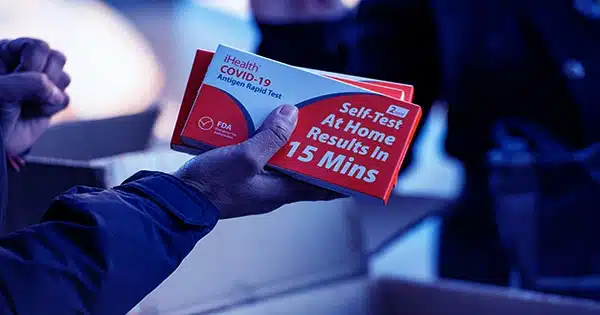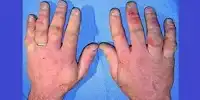Swab, swirl, and drop – then pray there’s only one line. Nearly four years after COVID-19 was declared a pandemic, many of us are familiar with the routine of lateral flow tests (LFTs) for the virus. However, additional varieties have emerged over time, including JN.1, which is currently the most common in the United States and around the world. Knowing whether or not you have the virus is still useful, which raises the question of whether existing LFTs can detect such new strains.
How do lateral flow tests operate
Short answer: yes. The longer solution entails determining which component of the virus is identified by the LFT and how SARS-CoV-2 mutates.
With environmental forces, the virus that causes COVID-19 is continually altering to survive in the population. Many virus varieties have emerged as a result of mutations in the spike protein, which is the component of a virus that allows it to enter host cells and begin to proliferate.

The great majority of LFTs, however, are seeking a nucleocapsid, or N-protein, which forms the protective capsule that envelopes the viral DNA rather than the spike protein. N-proteins are less likely to mutate than spike proteins, therefore testing should still be able to detect them.
“There’s always this fear that we’re going to have some mutation that’s going to make the tests fail, but so far that’s not the case,” said Dr. Susan Butler-Wu, a clinical pathologist at the University of Southern California’s Keck School of Medicine, in an interview with NBC News.
Why could a test be negative?
Though this may change in the future, there are several reasons why a test may not be effective even if someone has COVID-19. One of these is testing before the virus has multiplied sufficiently to be identified.
Dr. Michael Mina, an immunologist and epidemiologist, explained to CNN that viral kinetics typically take three, four, or five days for the virus to reach detectable levels. This has not changed significantly with newer variants.
The CDC presently recommends that if you have been exposed to COVID-19 but do not have any symptoms, you wait at least five full days before testing. If you experience symptoms, you should get tested right away. In both cases, if the test is negative, it is recommended that you take another LFT after 48 hours or undergo a PCR.
All “explainer” articles are fact-checked to ensure accuracy at the time of publication. Text, images, and links can be modified, removed, or added at a later time to keep information up to date.
The information in this article is not intended to be a substitute for professional medical advice, diagnosis, or treatment. Always seek the opinion of a trained health expert if you have any questions about medical conditions.















